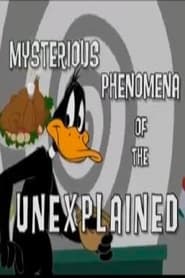Animation TV Series - Page 397
-
Isekai Cheat Magician
2019
star 6.2Nishimura Taichi is a typical, average high schooler, and Azuma Rin is a beautiful woman with the build of a model and excellent reflexes. The two live an ordinary high school life until one day, they're suddenly enveloped in a mysterious magic circle and transported to an unknown land. That world is full of terrifying monsters, beastmen, dwarves, elves, and many other races right out of fantasy. To survive in this new world, Taichi and Rin decide to become adventurers, but when they take the aptitude test, they discover they both possess cheat-level magic. -
SuperKitties: Su-Purr Adventures (Shorts)
2024
Join the SuperKitties as they show off their cat-tastic gadgets, superhero skills, and kitty kindness in these treat-sized shorts. -
JOJO英语启蒙
2021
-
Fatal Rule
2023
Fatal Rule
2023
star 7In the Abyss game, Qiao Jingting allies with Shu Ai and Bai Er against the evil ruler Han Bin and Heart Moon Fox. Amid a seeming victory, they fall into Han Bin's trap, shattering their trust. Zou Yidao's arrival shifts power dynamics, offering hope, but his ambiguous morality and deal with Han Bin create new challenges. Qiao Jingting and team unite with Zou Yidao to defeat Han Bin. Yet, as they leave the novice village, they face unforeseen threats surpassing Han Bin's, bringing an unknown multitude of crises in the outside world.(IQIYI) -
Onigiri
2016
Onigiri
2016
star 5.8Onigiri thrusts its players into mystical Japan, a land filled with mythical creatures of Japanese legend. Starting as a lone Oni, players fight against the malevolent influence of the Kamikui as their miasma spreads over the land. 8 NPCs, each with their own distinct personality and skills, ally themselves with the player to help build a legend, and quell the evil that has arisen. As you grow stronger together, so do the bonds binding you to each other. -
Gumby Adventures
1988
Gumby Adventures
1988
star 7.8The continuous adventures of Gumby and his pals. This time, he runs a farm which includes more pals such as a wooly mammoth, Denali, and a bee, Groobee. -
Mysterious Phenomena of the Unexplained
2001
star 4Daffy Duck was able to host a mystery show that explores crop circles, Bigfoot and many mystical unanswered mysteries. -
Dog & Scissors
2013
Dog & Scissors
2013
star 6.3A nonsense comical mystery. Kazuhito Harumi is a high school boy who loves books and is a fan of novelist Kirihime Natsuno. One day, he finds Kirihime writing at a cafe, about to be shot by a robber. He protects her from the attack but is killed instead. Through the supernatural power of a book-worm, he is reincarnated as a dachshund dog. Kazuhito (as a dog) writhes in a painful bookless life, when a sadistic woman carrying a pair of scissors offers him help. She is Kirihime herself. -
Snoopy's Story
0000
Snoopy's Story
0000
-
Pikmin Short Movies
2014
Pikmin Short Movies
2014
star 6.8Watch the colorful antics of Pikmin as they jump into three short movies, the first movies ever directed by Shigeru Miyamoto. The three shorts, titled The Night Juicer, Treasure in a Bottle and Occupational Hazards find Pikmin in unusual, funny, and even dangerous situations. NOTE: No real Pikmin were harmed during the filming of these movies. -
Genesis Surviver Gaiarth
1992
star 9.5In a post-apocalyptic future, Ital Del Labard sets out to avenge the death of Randis R. Khiezard. Along the way he teams up with a war-roid called Zaxon, and junk-hunter, Sahari. -
Marginal Prince: Gekkeiju no Ouji-tachi
2006
star 6.7The main character, Yuuta, is supposed to be the viewer's younger brother who goes off to study abroad on a small island in the Atlantic that can not be found on any map. The school he enters is called St. Alphonse Academy. The boys who study here are all "marginal princes" which appears to mean Princes of remote, frontier or border regions. -
Duck & Goose
2022
Duck & Goose
2022
star 5.3Feathered friends Duck and Goose couldn't be more different, but in this preschool show, they learn how to bring out the best in one another. -
The Dog & Pony Show
2020
The Dog & Pony Show
2020
A hilarious series about two very different best friends who leave their magical world of Rainbow Fjörd and move to the not-so-magical big city of UniCity. -
Hana no Kakarichou
1976
Hana no Kakarichou
1976
star 8A wacky comedy about a man from a noble ancestry of long ago, but who in modern times is just a lowly salary man that is constantly being humiliated by his family and co-workers. -
Mazica Party
2021
Mazica Party
2021
star 8The franchise's story centers on wizards who gather mazica in order to save the world. Junior high school student Kezuru wakes up after a strange dream featuring himself as a wizard, a creature called "mazin," and a mysterious girl. The next day, his friend Kuracchi proudly shows off the newly launched Mazica Party card game. To Kezuru's shock, all the characters drawn in the game's cards are just like the ones in his dream. -
The Funky Phantom
1971
The Funky Phantom
1971
star 5.6Three teenagers and their dog solve mysteries with the help of two ghosts from the 18th century. -
Delilah and Julius
2005
Delilah and Julius
2005
star 6.3Teenage secret agents Delilah and Julius use their intellect, gadgets and martial arts skills as they travel the globe to stop covert plots for world domination.



















